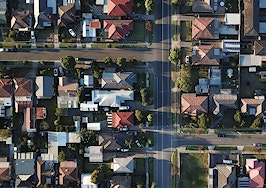More than two and a half months after the coronavirus pandemic shut down most of the U.S. economy, the number of homeowners asking for leniency on their mortgages is still rising.
A report out Tuesday from the Mortgage Bankers Association (MBA) highlighted the scope of the issue and revealed that as of May 17, 4.2 million homeowners are now using forbearance programs. That number represents 8.36 percent of the millions of loans covered in the MBA’s report, and is up from 8.16 percent one week prior.
A week ago, only 4.1 million mortgages were in forbearance.
The new report further shows that 11.6 percent of loans backed by Ginnie Mae — which is a government-owned corporation and part of the U.S. Department of Housing and Urban Development (HUD) — were in forbearance programs. That gave Ginnie Mae the largest share of loans in forbearance.
By contrast, 6.36 percent of loans backed by Fannie Mae and Freddie Mac were in forbearance as of May 17.

Credit: MBA
Mike Fratantoni, MBA’s senior vice president and chief economist, said in the report that “the decline in employment and income is hitting FHA and VA borrowers harder.”

Michael Fratantoni
However, the report does offer some good news as well: While the number of loans in forbearance is rising in an absolute sense, the trend is also slowing down.
“Although job losses continue at extremely high rates, mortgage servicers are reporting only modest increases in the share of loans in forbearance as of May 17,” Fratantoni added.
The report shows that the number of loans in forbearance spiked in late March and early April. But the curve mostly flattened out by mid-April and has continue to see only modest increases since. Those findings roughly parallel employment trends, which saw the largest jumps in jobless claims early in the crisis.

Credit: MBA
These findings overall support comments Fratantoni made last week when he suggested “the situation could be stabilizing.”
The report was based on a survey of mortgage servicers that the MBA conducted between May 11 and May 17, and represents 38.3 million loans, or nearly 77 percent of the first-mortgage servicing market.
Mortgage forbearance programs vary depending on who holds the debt, but in general they allow homeowners suffering from pandemic-induced financial trouble to delay their payments.
The programs can consequently be a major life-saver for homeowners who have lost jobs or been furloughed, though there are potential downsides as well. For example, Sahil Gupta, founder of real estate financing startup Noah, told Inman Tuesday that homeowners who apply for forbearance can then be blocked from refinancing for a year — even if they don’t ultimately choose to defer their payments.

Sahil Gupta
He also said that some companies servicing mortgages still have to make payments, even if they aren’t receiving money from homeowners, potentially leaving them financially strapped.
“The challenge with the forbearance programs have been the unintended consequences,” Gupta added.
Still, Gupta said that the mortgage market appears to be healthier now than it was during the Great Recession over a decade ago, and he was optimistic that the worst of the current mortgage crisis has passed.
Fratantoni was similarly upbeat, saying in Tuesday’s report that “forbearance requests declined relative to the prior week, and while call volume picked up, servicers appear well-staffed for this volume, as wait times and abandonment rates dropped.”

























